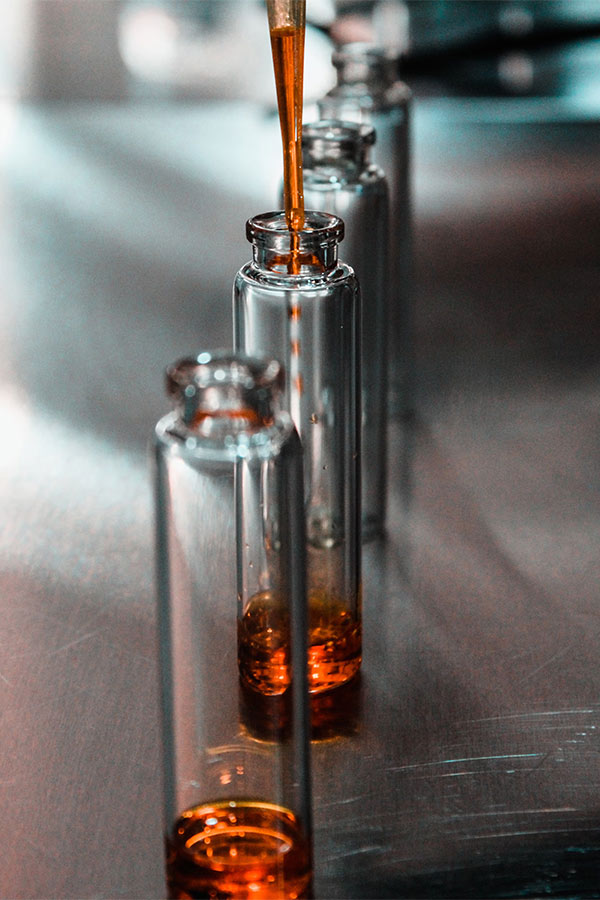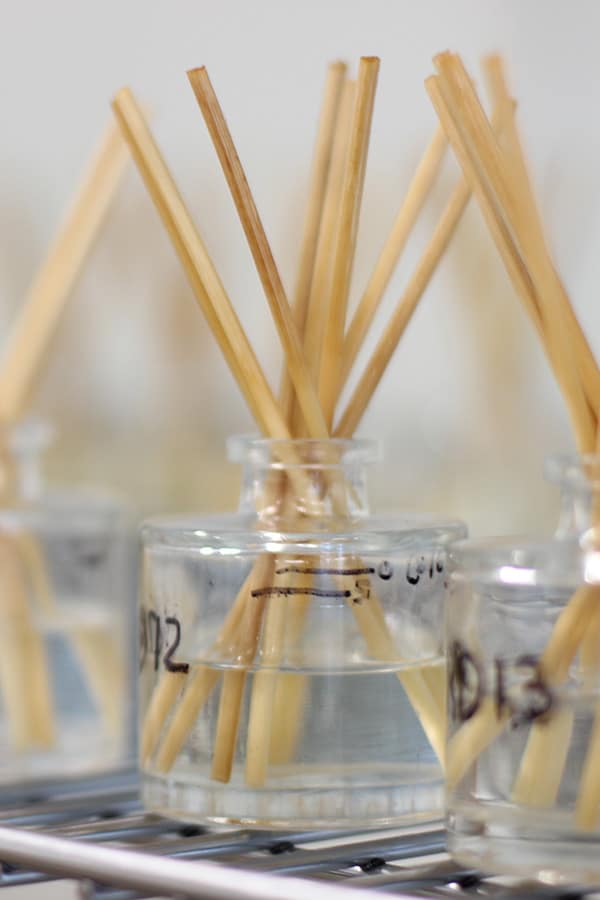With the preference for natural ingredients and scents in cosmetic and fragrance products growing, using synthetic ingredients in fragrance is increasingly seen in a negative light. Synthetic ingredients are often perceived as more harmful, less effective and worse for the environment.
Despite the rise in products touting their ‘all natural’ credentials, synthetic ingredients still appear in most fragrances, often making up as much as 70% of the recipe. Some of the most influential and iconic fragrances contain key synthetic ingredients, including Chanel No 5’s signature aldehyde notes and the synthetic coumarin used in Houbigant’s Fougère Royale – the fragrance which originated a whole new fragrance family.
If synthetics are so important and common throughout the industry, can they really be as bad as their reputation suggests?
What's the difference between natural and synthetic ingredients?
What are natural ingredients?
Natural ingredients come from a variety of natural sources – plants, flowers, trees, fruits and even animals. They are extracted in a variety of different ways including steam distillation, expression and solvent extraction.

Steam distillation is typically used to extract fragrance from plant materials like flowers, leaves and woods. The steam is passed through the materials to drive out the fragrance compounds in them. This creates a mixture of water and fragrance compounds, which are then separated into two parts – essential oil and hydrosol. Essential oils are the part used in fragrances, as they contain a more potent concentration of the fragrance compound.
Expression is typically only used on citrus fruits, as their rinds are rich with essential oils. The rinds are pierced and compressed to release the essential oils within.
Solvent extraction is used for materials which are too delicate to withstand the heat of steam distillation or contain too little fragrance oil to be extracted via expression, such as some plant materials and fragrances from animal sources. The raw materials are immersed in a solvent, such as hexane or ethanol, which is able to dissolve the aromatic compounds from within the material. The solvent and fragrance compound mix is then separated to leave behind a concentrated fragrance absolute.
What are synthetic ingredients?
Synthetic ingredients are created in a lab via chemical processes like fractionation and synthesis to isolate the desired fragrance molecule. They are derived from a variety of sources. Many use petroleum as a starting point, but others are synthesised from raw natural ingredients. The synthetic category includes different types of fragrances, such as non-natural synthetics, nature-identical synthetics and natural isolates.
Non-natural synthetics are molecules which are not found in nature, but were scientifically created different reactions, such as aldehydes.
Nature-identical synthetics have an identical chemical structure to an ingredient found in natural sources, but have been extracted or created through chemical processes rather than natural extraction methods. Ambroxide is one example; originally extracted from ambergris (a waxy substance extracted from sperm whales’ intestines) via solvent extraction, modern perfumers now use ambroxide synthesised from sclareol, one of the components of clary sage essential oil.
Natural isolates are extracted from natural materials using chemical processes, such as coumarin extracted from tonka beans.
Why do fragrances use synthetic ingredients?
There are lots of different reasons perfumers opt for using synthetic ingredients in their fragrances. Some are pragmatic considerations concerning the cost or practicality of using natural ingredients, while others are creative reasons where the unique scents of synthetic ingredients are needed to fulfil their vision for the fragrance.
1. To replicate a scent that can’t be extracted from natural sources
One of the main reasons that perfumers use synthetic ingredients is that by only using natural ingredients, they are limited to scents which can be extracted from natural materials. Not every naturally occurring scent can be extracted into an essential oil or absolute. Some materials are just too delicate or contain too little fragrance, so a synthetic “reproduction accord” is created to replicate the scent instead. The scent of blackberries, violets and plums are all reproduction accords recreated synthetically. Around 3400 raw materials are used by perfumers, only around 400 of which are natural ingredients.
Other fragrances can’t be extracted because they don’t really have a raw material source. There's no way for the crisp scent of a seaside breeze to be distilled from the air or the ocean, for example. However it can be evoked by Calone, a synthetic molecule with a fresh, clean, slightly oceanic scent. Without synthetic molecules like this, we wouldn’t be able to enjoy watery, aquatic scents in home or personal fragrance.

2. To create a more sustainable scent
Natural fragrances are made from raw natural materials and only a small portion of these materials that contains the fragrance compound are needed for the scent. As a result, very large amounts of natural ingredients are often required to extract just a small amount of essential oil. This leaves lots of waste by-products left over. Farming, harvesting, extracting and transporting these ingredients each has an environmental cost in the land, water and fuel it uses.
Due to the huge amounts of raw materials needed, many natural ingredients common in the fragrance industry are now listed as vulnerable or endangered, including guaicwood, vanilla and agarwood.
Some natural fragrances, like civet, musk and ambergris, come from animals which are captured or killed to harvest the ingredients. Using synthetic reproduction accords instead of the natural animal product is a much more humane and sustainable option.
3. To reduce the price and make the fragrance more accessible
Due to the large amount of natural resources involved or a costly and time consuming extraction process, natural fragrances are often significantly more expensive than a synthetic alternative. Some natural ingredients are so expensive they’re often diluted with other, cheaper ingredients to make them more affordable. For example a product sold as “rose essential oil” can be as much as 90% geranium or palmarosa oil.
To use all natural oils in the quantity needed for a strong fragrance would frequently result in a scent costing hundreds or even thousands of pounds – not a price many of us are willing to pay! The invention of synthetic ingredients in the 19th century democratised fragranced products. Previously they were only available to wealthy customers who could afford the price tag of all-natural scents.
4. For consistency
Fragrance ingredients extracted from natural sources can vary based on the quality of the raw materials used, environmental factors that might have affected the crop and scarcity in times of poor harvests. This makes it harder to recreate the same scent across multiple batches or a perfume or home fragrance. As synthetic reproductions are created in a lab setting with more control over the components it is much easier for synthetics to give a consistent, easily available fragrance.
5. For durability
Natural fragrances have a much shorter shelf life than synthetics, lasting only one to two years on average. This can result in a waste of product, for both retailers who have to discard their stock if it hasn’t sold in time and for customers who find a product they purchased has lost its scent before they’ve used it all. In comparison, synthetic fragrances use fixative ingredients to prolong their shelf life to around five years.
6. For appearance
Many essential oils appear dark in colour. Orange oil is a bright yellow, oakmoss essential oil is a muddy colour and jasmine oil is brown. Products using these essential oils won’t appear as clear liquid or white wax, but contain a yellow or brown tinge. Many people are put off by this seemingly ‘discoloured’ appearance despite the natural ingredients, so a synthetic alternative can be swapped in to give a more appealing look to the final product.

Are synthetic fragrances safe?
So long as you’re purchasing fragrance products from a reputable company, the synthetic fragrances used will be safe.
This isn’t to say there are no dangerous synthetic ingredients. One of the earliest synthetic ingredients was nitrobenzene, later withdrawn from use after it was found to be highly toxic. However synthetic fragrances are not more dangerous than natural essential oils, which can also contain VOCS like cinnamaldehyde, allergens like citronellol and toxic chemicals like toluene.
All Ashleigh & Burwood fragrances are produced in collaboration with fragrance houses who are members of The International Fragrance Association. IFRA regulates which ingredients in what quantities can be used in fragrances. These ingredients have been tested and assessed based on the risks they pose. The use of highly dangerous ingredients, both synthetic and natural, is prohibited. Some of the most strictly regulated ingredients are natural as they contain allergens.
Natural ingredients are loved for a reason, their fragrances are often some of the most evocative and treasured scents we encounter. But despite this, they’re not always the most practical, most sustainable or safest ingredients to use in fragrance. Although synthetics have a bad reputation, their popularity among perfumers endures not just due to lower costs, but also more consistent fragrance performance, less wasteful production methods and a wider, more creative fragrance palette.

